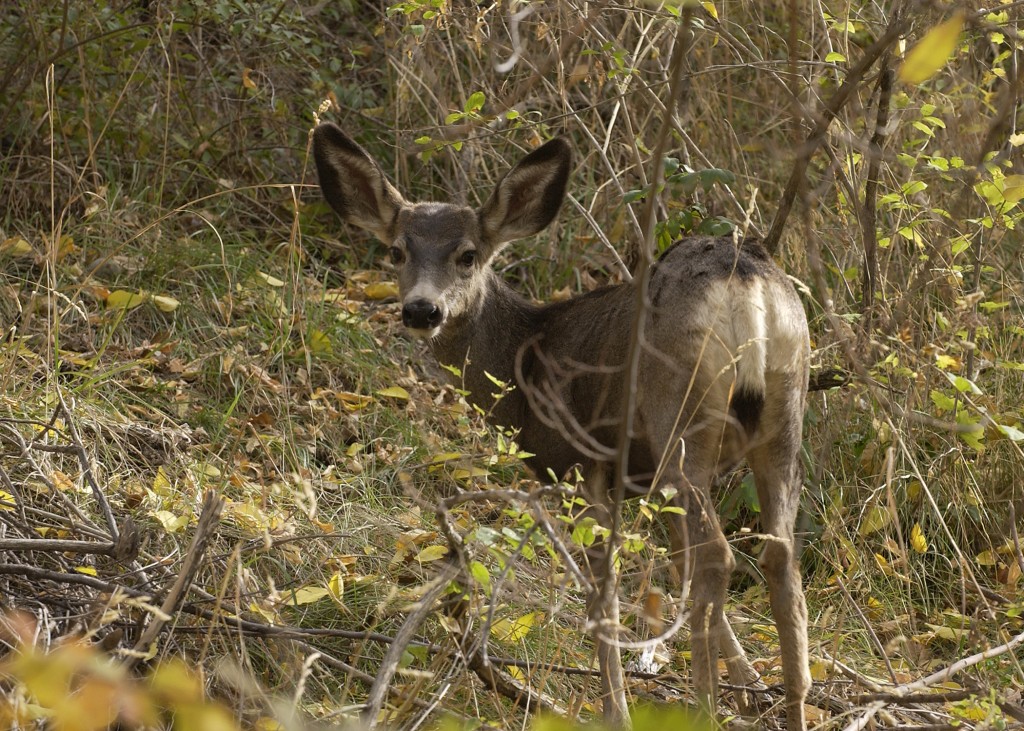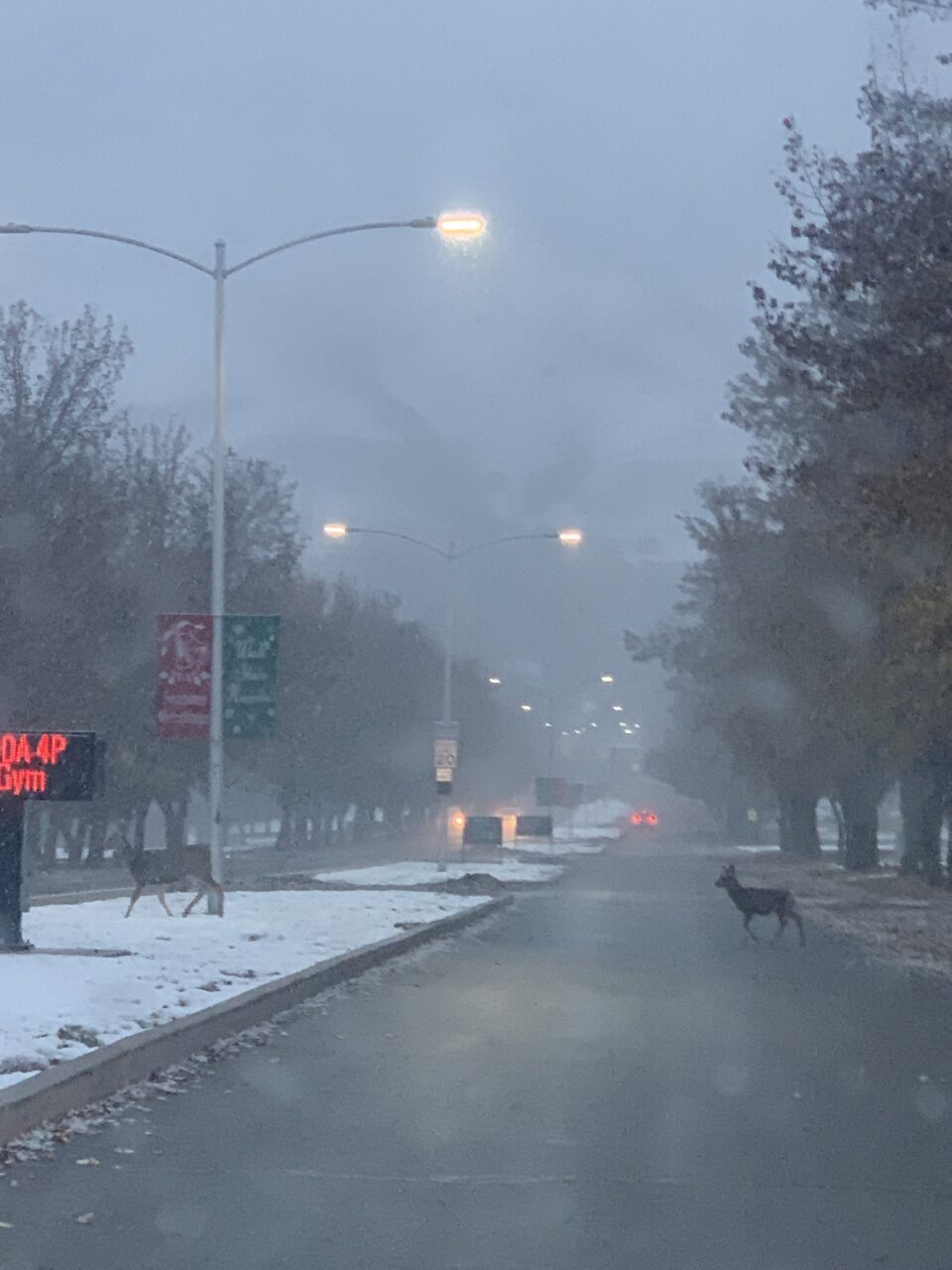
Utah’s record-breaking winter has brought an above-average snowpack and local wildlife is struggling to find food in their snow-capped homes.
In a press release from the Natural Resources Conservation Service shared on April 6, Snow Survey Supervisor Jordan Clayton said the statewide snow water equivalent has now broken all previous snowpack records.
With all of Utah’s major watersheds above 130% of normal precipitation and the snowmelt runoff projected to break the previous record, this winter season has been a memorable one not only for Utah’s constituents but also for its wildlife.
“Winter is the most difficult time of year for deer especially,” Faith Heaton Jolley, public information officer for the Utah Department of Natural Resources Division of Wildlife Resources, said.
Heaton Jolley said this winter has been particularly difficult on wildlife as the snowpack levels have buried many animals’ food sources. While some population loss is healthy for the deer population, the DWR closely monitors the numbers so they can intervene when they get too low.
“There’s kind of a natural cycle to deer populations and it can actually be beneficial for some of those older and sicker animals that aren’t contributing to the population through reproduction anymore to pass away,” Heaton Jolley said. “However, there are times when the winter is so severe that it can impact the survival of adult deer and fawns, which can have implications for the overall population in those areas.
When severe winters threaten deer populations, the DWR implements emergency deer feeding programs. Although feeding wildlife is generally discouraged, Heaton Jolley said in extreme conditions it can be necessary. The DWR implemented emergency deer feeding efforts in several northern Utah counties in January where the snowpack was particularly deep and the deer have minimal body fat.
“We have seen some of that in northern and northeastern Utah this winter, where there have been significant die-offs of adult doe deer and fawns,” Heaton Jolley said.
This year is the first time the DWR has had to implement emergency deer feeding efforts since 2017.
Despite the DWR’s efforts, it is likely the deer population will still be affected by the heavy winter, according to Heaton Jolley.
“In some of our hardest hit areas in northern Utah, we are projecting some significant adult deer and fawn loss which will impact the herd populations in those areas. In other parts of the state, the deer population is doing great,” she said.
In addition to activating emergency deer feeding efforts, The Department of Wildlife Resources has closed several wildlife management areas in northern and central Utah to help wintering deer make the transition from a harsh winter to spring.
“This time of year can be particularly sensitive for deer,” Heaton Jolley said.
The DWR has also established emergency statewide restrictions for shed antler hunting to help some of the struggling deer herds.
As Utah wildlife is venturing away from their snow-covered homes in search of food, BYU students have encountered wildlife on campus and around their neighborhoods as the animals are entering more highly populated areas.
BYU student Katie Fastabend recently saw nearly 18 deer by the LaVell Edwards Stadium.
“A few weeks ago we were walking down to the stadium and saw probably 18 deer in the neighborhood north of that road! We were shocked at how many there were. It was the highlight of our walk for sure,” Fastabend said.
Many students are enjoying the opportunity to see Utah’s wildlife up close.
“I don’t get to see wildlife very often and never this close,” BYU student Grace Gibson said. “I’ve had a couple of instances of seeing deer either on campus or by my dorm which has been super exciting! It always feels a bit magical, almost like a Disney movie.”
The DWR has noticed a lot of deer, elk and moose at lower elevations than is normal in search of food. Because deer are cougars’ main food source, cougars have been spotted in local communities as well.


When people encounter wildlife, the DWR recommends giving the animals plenty of space and not trying to feed or touch them.
“Admire them from a distance. With deer in particular, they will just migrate through looking for food, so we usually just say leave them alone and they will continue to move through,” Heaton Jolley said. “We’re always appreciative of people that are tolerant of and patient with wildlife, especially this time of year when they are coming down to eat.”
People who encounter deer do not need to report deer sightings to the DWR unless they are presenting a safety concern or the deer appears injured. Similarly, cougar sightings do not typically need to be reported unless the cougar has been spotted multiple times or the cougar has killed an animal. It is recommended to always report a dead deer by the side of the road so it can be properly removed.
If larger animals such as elk or moose are seen, it is best to call DWR so they can help relocate the animals.
“If an elk or a moose comes far down into city limits, people should always report it so we can help relocate those bigger animals. Moose in particular can be fairly aggressive around dogs so we always want to come and relocate them whenever they are in city areas,” Heaton Jolley said.
Individuals can report a wildlife sighting can find the number for the nearest DWR office on their website. Local Provo and Orem residents can call the central region office at 801-491-5678.
Fore more information about when one should report an animal sighting, visit the Department of Wildlife Resources website.




